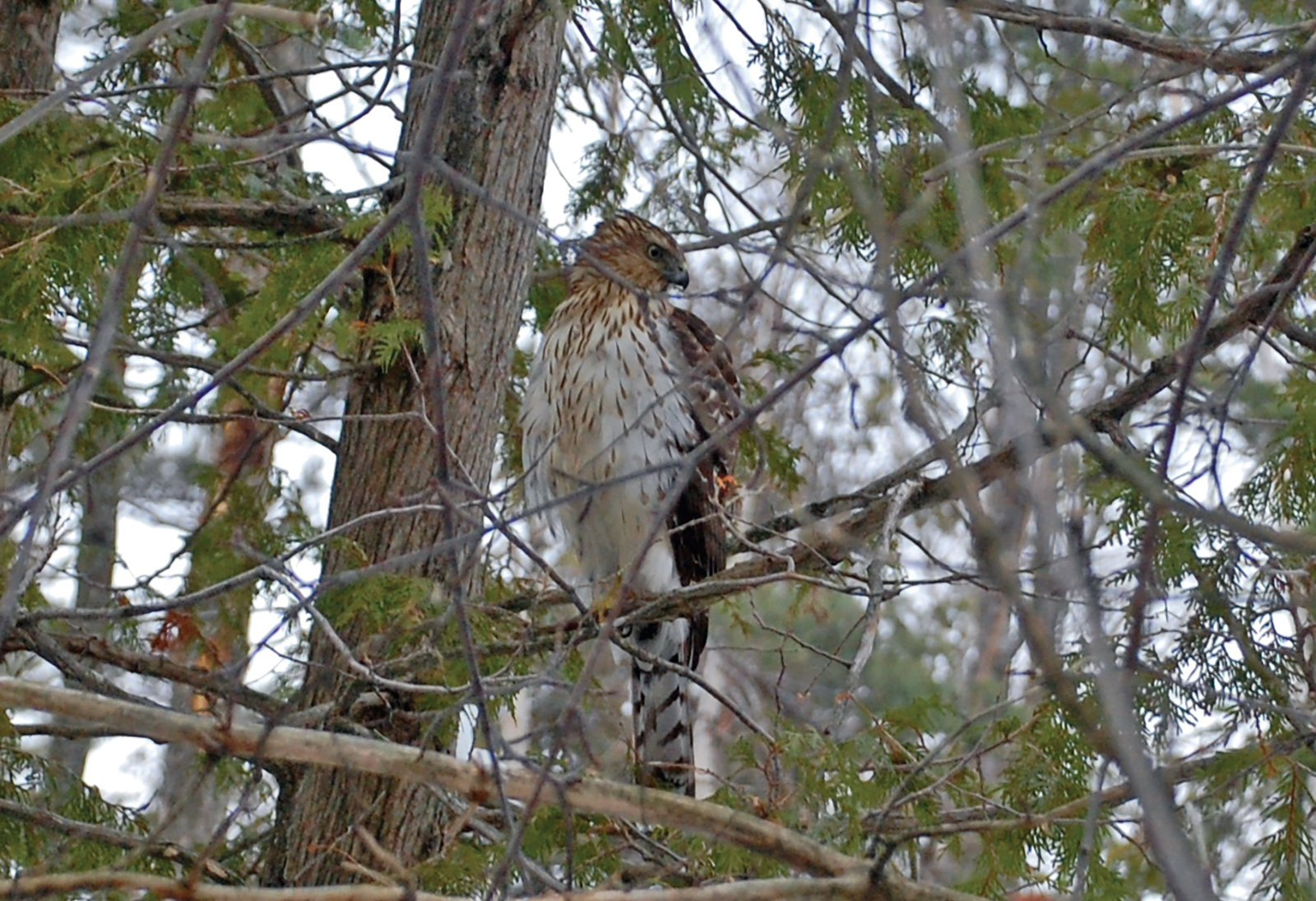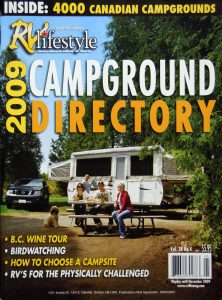Wings at our Window –
Bird Watching Tips for RV Campers
This article first appeared in our RV Lifestyle Magazine 2009 Canadian Campground Directory issue.
All links have been updated to November 2022.
A Special feature by Frank and Lucy Spence.
“Have you ever stopped to watch a bird? Or had your spirit lifted by its cheerful song? Perhaps you have taken a few solitary minutes to examine its unique colours and patterns, chuckled at its odd mannerisms, or marvel at its ability to fly.” (Bird Studies Canada – https://www.birdscanada.org/ )
One of the fascinating aspects for RV’ers is being able to study birds and wildlife in their natural environment.
Did you know that bird watching is the all-time number one activity in North America?
Whether you are on the West Coast, Mountains, Plains, Great Lakes, Eastern or Northern parts of Canada, birds are a common factor in all areas. Different areas have different birds, but all areas have birds. In some locales the birds are more plentiful than others, and at various times of the year, bird populations can change dramatically. RV’ers can combine RV’ing with bird and animal watching anywhere the RV will go.
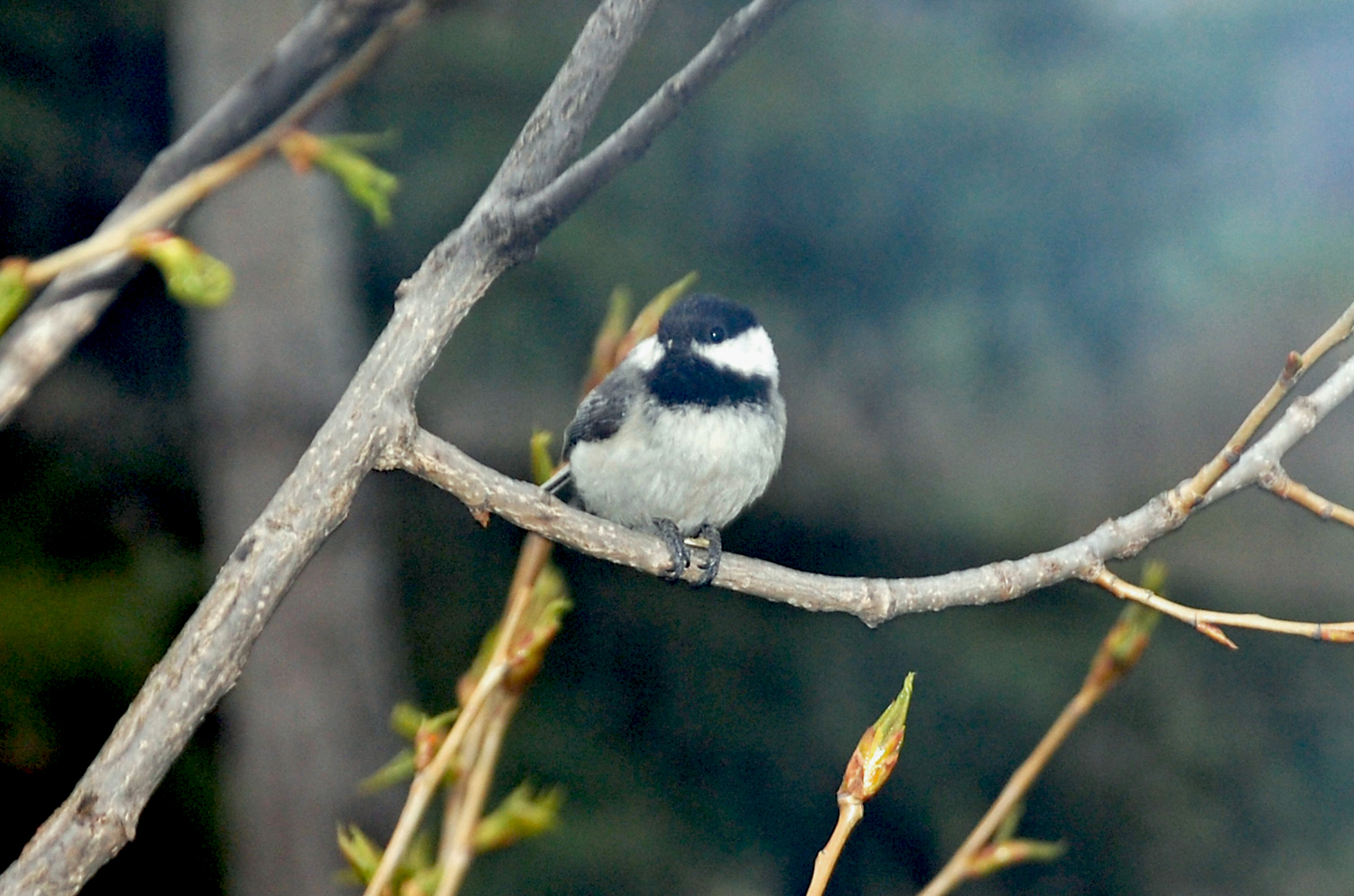 Many people are familiar with bird watching if only to have done it briefly, while others are very passionate about it. We are somewhere in between, more on the novice side than the seasoned veteran. Most of our bird watching is from within our motor home in the fourth season when there are no leaves on the trees. The wildlife are actively searching for food and being able to see further increases our viewing range.
Many people are familiar with bird watching if only to have done it briefly, while others are very passionate about it. We are somewhere in between, more on the novice side than the seasoned veteran. Most of our bird watching is from within our motor home in the fourth season when there are no leaves on the trees. The wildlife are actively searching for food and being able to see further increases our viewing range.
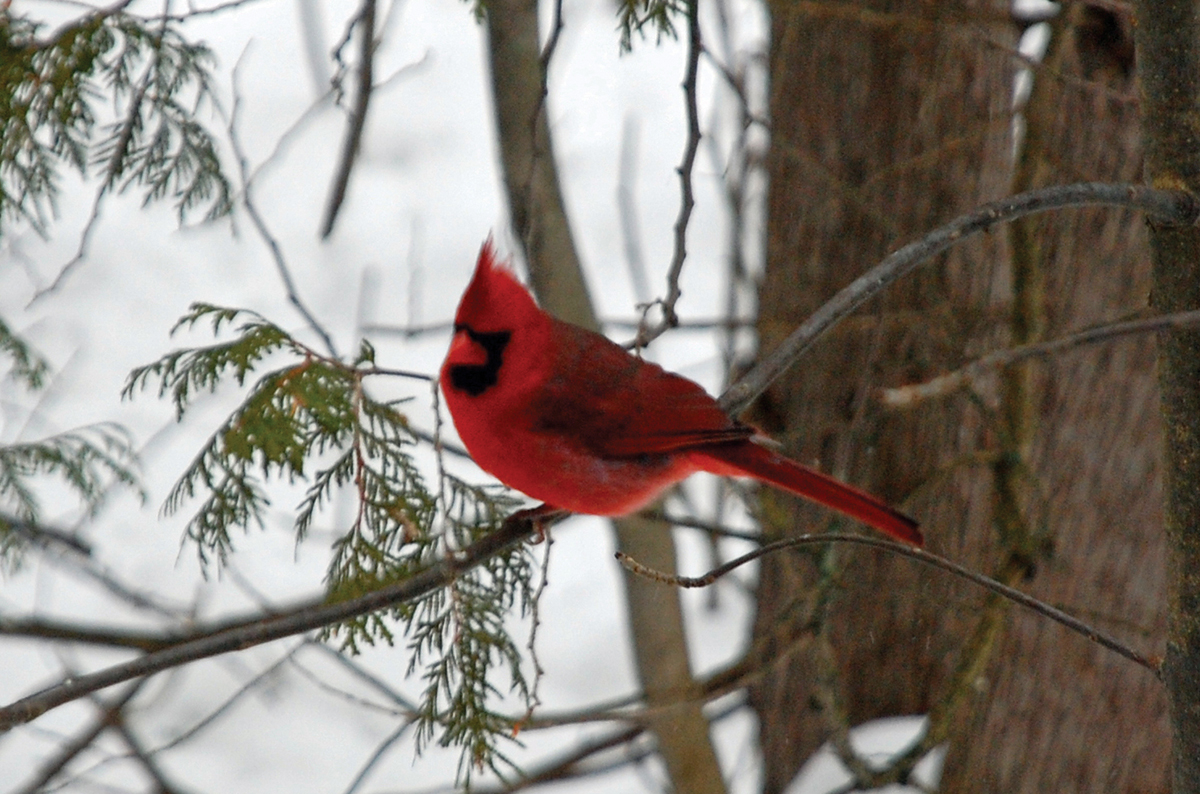
Canada’s National and Provincial Parks are our favourite location for bird watching no matter the season. In the past few years we have been in over 130 parks and as you might guess, we have an ideal opportunity to study nature up close. With the birds also come some four legged friends including squirrels. We have had deer on our campsites, and we have a picture of both raccoons and a skunk feeding together – most people have never heard of such a thing happening. We got this picture because some birds had scattered seed on the ground below a feeder. Thank goodness we were inside, and out of the way of the skunk! As we watched the animals feasting on the bird seed, the raccoon climbed up the pole, reached over and shook one of the bird feeders to cause the seeds to fall out – that was a unique opportunity to capture another rare picture.
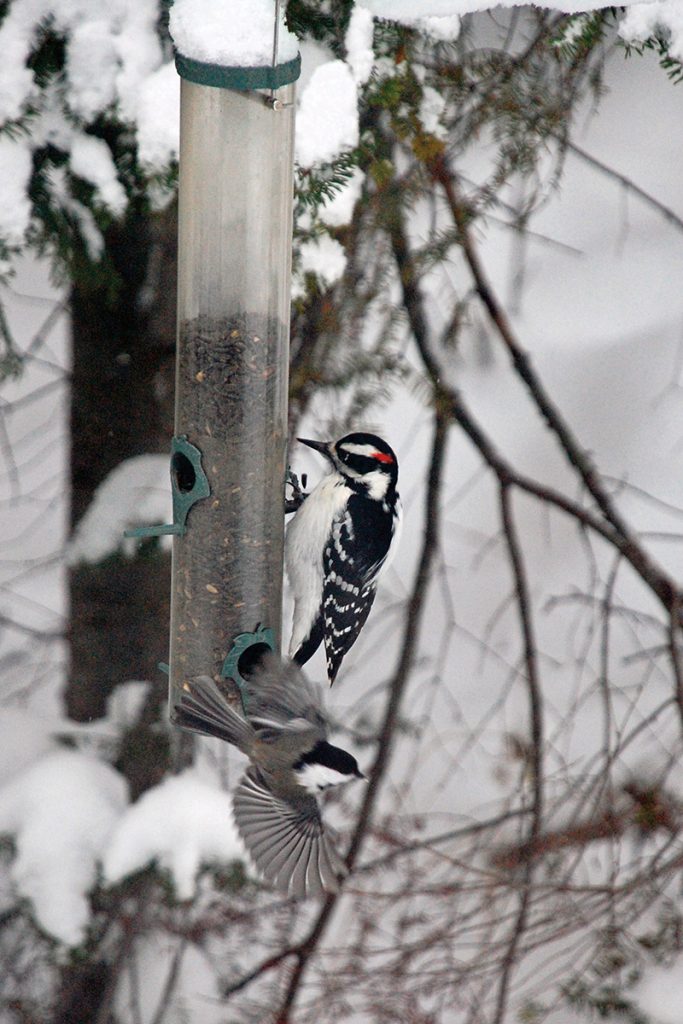
A number of our feeders have suction cups to allow the feeder to be mounted on the outside of our tinted glass windows. The daily drama gives us hours of enjoyment. Periodically, Willow, our cat, forgets that the glass is there as she hits the window, bounces back wondering what happened. We often see her look around to see if we were watching. In the summer we can watch the tongue of a humming bird licking up the syrup in quick fashion. Watching a bird break open the hard shell of a peanut to get at the nut gives us time to pause and wonder at how they do that so effectively.
How did we get started? Lucy had more of an interest in this then I did at the start, but I have become keen about it as time marches on. We have a number of different bird feeders that we will put up at the various locations that we stop at. Lately we have averaged over 200 kg (440 lbs) of seed each winter.
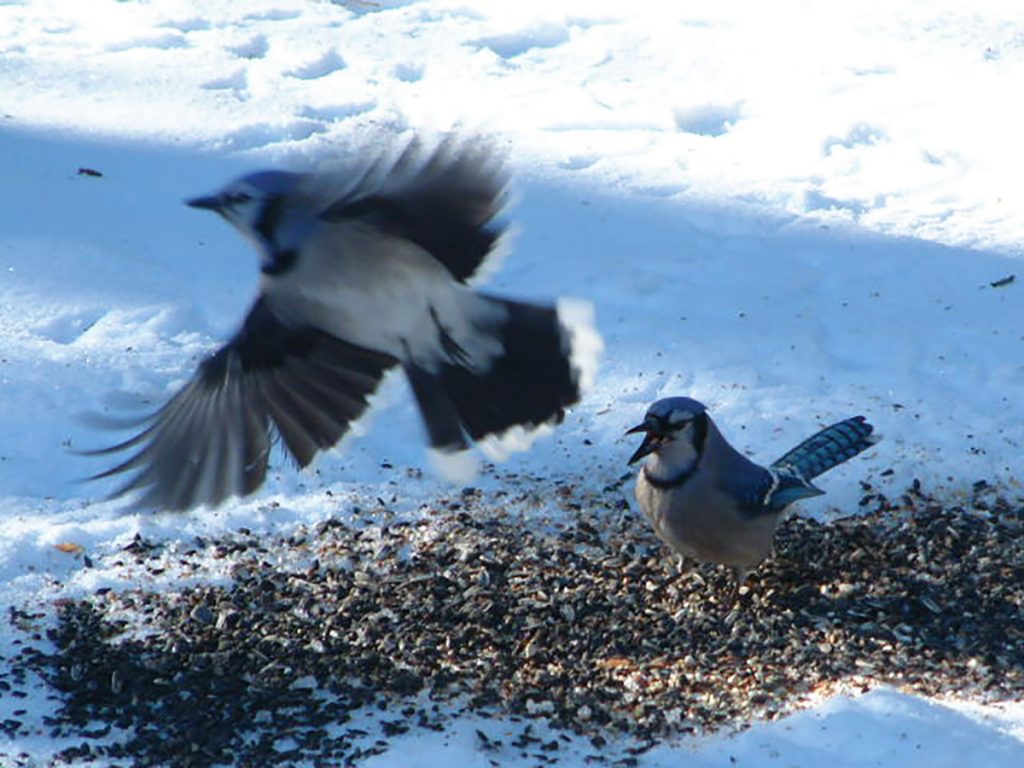
Bird Watching: What are the basic things that you need to get started?
First, a good reference book. There are so many different birds that you will want to be able to identify all of them. Having a reference book with coloured pictures will greatly assist you. Talking about a bird by name is much better than saying “oh you know, that dark coloured bird with the short beak and stripes on its wings”. We have a couple of different books, but our main book is the “All the Birds of North America” – American Bird Conservancy’s Field Guild.
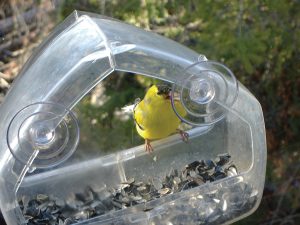
Second, you need to have something to reward the birds with – meaning food. Bird seeds and suet, are the main things. Depending upon the birds that are common to the area you are in, will influence your decision as to the best seed to put out. Giving birds their favourite food, will help to encourage them to come back. For us we have found that the black oil sunflower seeds, the nyger seeds and suet mixed with seeds, and occasionally a mixture of peanut butter and sunflower seeds, all seem to work to bring the birds to our location, singing for more. Try not to buy bird seed with a lot of filler in it, as this is mainly rejected by the birds and becomes waste material on the ground. (https://ofnc.ca/programs/fletcher-wildlife-garden)
Third, you will want some sort of feeder and there are hundreds of different types. One of our more effective bird feeders is made from a cutout washed plastic bottle, a stick for a perch and a piece of string to hang it up with. Then, there are the birds that will not come to any feeder but prefer to feed from the ground.
Fourth, capturing birds and other wildlife on camera allows for verification of what was observed, and identification of interesting features such as feather patterns. A zoom lens on your camera will increase your capacity to obtain pictures especially in difficult situations. After years of having a simple point and shoot camera, we finally graduated to a more complex digital camera (Nikon – D40) with a zoom lens (18-135 mm). Then to be able to compare the picture to your reference book for identification purposes or consulting with someone else as to what kind of bird it was, adds to the enjoyment of the hobby. If you are lucky to capture on camera a rare bird in your area, who knows, you might even be mentioned in the local birding newsletter. Nothing like being able to have the bragging rights to a picture that you actually took. For example, Lucy’s picture of a Coopers Hawk outside our window is one that she is especially proud of. No, we are not professional photographers by any standard but we are out their taking pictures and periodically getting some interesting shots while learning more about the camera all the time.
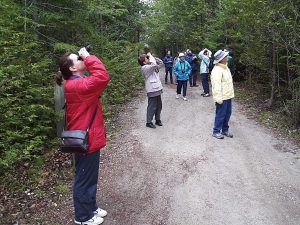 Fifth, you may wish to obtain a pair of field glasses for viewing the birds. We have a pair of Pentax Binoculars 9×28 DCF LV glasses that have a bright and clear field of view, lightweight design and waterproof construction (meaning that they can be used in all weather conditions) plus you can wash them. For us, they are more than adequate for our viewing needs and much more suitable than our old pair of heavy weight glasses. There are many websites should you need help in deciding what to purchase, for example:
Fifth, you may wish to obtain a pair of field glasses for viewing the birds. We have a pair of Pentax Binoculars 9×28 DCF LV glasses that have a bright and clear field of view, lightweight design and waterproof construction (meaning that they can be used in all weather conditions) plus you can wash them. For us, they are more than adequate for our viewing needs and much more suitable than our old pair of heavy weight glasses. There are many websites should you need help in deciding what to purchase, for example:
- https://www.ricoh-imaging.co.jp/english/products/binoculars/
- https://www.birdwatching.com/
- https://www.audubon.org/gear/binocular-guide
Sixth – a simple log book to record the date, kind, and location of your bird sighting is always interesting to refer back to. For example, record the date of the first spring sighting of a special kind of bird and then compare that to the following spring and the date you see the same kind of bird. Recently we participated in a winter bird study keeping track of the kinds and numbers of birds that visited our campsite. It is very difficult to count the number of birds at any given time, so we would give an educated guess as to the number of birds we were looking at. Our study asked that we count only the maximum number of birds we saw at any one time. During January we had 15 varieties of birds visiting us.
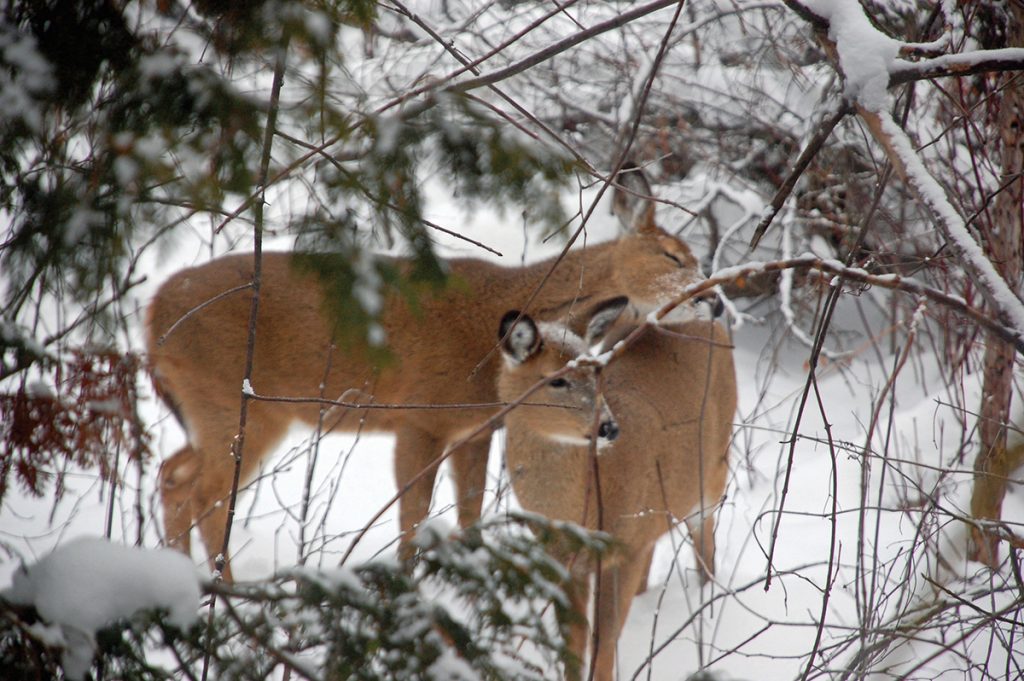
Many people enjoy the annual “Christmas Bird Count” held in various locations as a way to meet other birders, enjoy the outing, and help various bird societies track what is happening with our winged friends. In 1900, American ornithologist Frank Chapman asked birders across North America to head out on Christmas Day to count the birds in their home towns and submit the results as the first “Christmas Bird Census”. His suggestion has evolved into one of the largest organized birding events in the world, and a holiday tradition during the Christmas season for over 50,000 bird watchers each year. The Christmas Bird Count is now conducted in over 2,000 localities across Canada, the United States, Latin America, and the Caribbean. All bird observations are entered into a large database that helps scientist better understand bird distribution and abundance over time. As with any hobby, the more you get into the activity, the more fun you will have, and the more knowledge you will gain.
Birding Festivals: Our home base is southwestern Ontario. MacGregor Point Provincial Park has an annual Huron Fringe Birding Festival each spring (usually around the end of May – first part of June) Being at the base of the Bruce Peninsula, this festival attracts hundreds of people to the area for workshops, seminars, hikes, tours, camping, and general interest in the out-of-doors. Other areas have similar events, check with your friendly tourist bureau for specific details, you will be glad you did. (https://huronfringebirdingfestival.ca/)
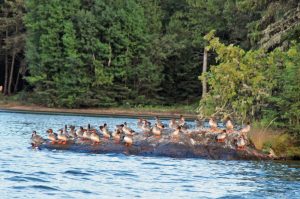 Some parks actively encourage visitors to feed the birds; other parks discourage this, claiming they do not want the birds and any other wildlife depending upon human handouts, and still others remain non committal about feeding the birds. Common to all the parks that we have been in are various cautions about leaving out food for certain animals. For example, bears are not welcomed in any campground.
Some parks actively encourage visitors to feed the birds; other parks discourage this, claiming they do not want the birds and any other wildlife depending upon human handouts, and still others remain non committal about feeding the birds. Common to all the parks that we have been in are various cautions about leaving out food for certain animals. For example, bears are not welcomed in any campground.
It took us a long time to figure out why all of a sudden all the birds and squirrels would go still or completely disappear. Finally we saw why, a hawk was in the area looking for an easy meal. When the hawk moved off for other opportunities, the birds would become active again. We watched this happen dozens of times, and the birds that we could sometimes see hiding in the trees, were all very still, not moving a feather other than you might see the eye moving around, watching. Then another day, we noticed that a Coopers Hawk (15-18 inches tall) was sitting on a branch, but the small birds were all very active. The squirrels, on the other hand, had all gone into hiding.
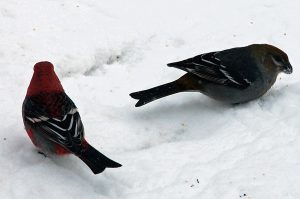
If you are feeding the birds, chances are you are also feeding the squirrels and chipmunks too. As you study the eating habits of the wildlife, you soon realize the interesting balance that mother nature has developed so that all the creatures enjoy the bounty of the land. Some birds take one seed and fly off, while another flicks seed all around causing some to fall to the ground so that the ground feeders can share in the feast. Some hide seed in the bark of the pine trees, only to have another bird come along and eat the seed. Still others try to chase another bird away only to have another move in while the first was distracted. Like people, some birds are very polite and wait their turn while others bully their way in. Periodically a number of smaller birds will gang up on one of the bully types to drive it away.
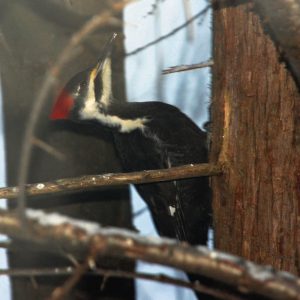
We also learned that we see more from inside our motor home watching out the windows then we see when we are walking around. Yes, many bird watchers do walk around and they have learned to watch with their eyes and more so with their ears. Being able to recognize a bird by its song is a nice addition to this amazing hobby. This is something that we are just starting to enjoy.
If you have not done so already, join in the bird watching, the most popular of all activities. You will be richly rewarded. For a start, check the Canadian Wildlife Service website for some marvellous bits of information.
https://www.canada.ca/en/services/environment/wildlife-plants-species/migratory-birds.html


















